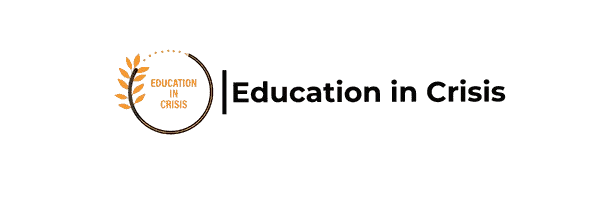Advocacy for Quality Education for All in Africa
Advocacy for Quality Education for All in Africa
Education in Crisis (EiC) is at the forefront of efforts to transform education across Africa, with a steadfast commitment to ensuring inclusive, equitable, and quality education for all children—especially those affected by conflict, displacement, and poverty.
Through a range of innovative and community-driven initiatives, EiC is improving access to education, strengthening teaching capacity, and creating safe, supportive learning environments. From emergency classrooms and school feeding programs to teacher training and digital learning hubs, EiC’s work is creating meaningful impact in some of the continent’s most fragile and underserved regions. Together with partners and local communities, we are building a future where no child is left behind.
According to UNESCO, a report suggests extremely limited progress. Although 75 million more African children are enrolled in school today compared to 2015, the number of out-of-school children has increased by 13.2 million to over 100 million during the same period.
Even more alarming is the lack of improvement in the quality of education, whether measured in terms of basic infrastructure or learning outcomes. The average school student in Africa today is about as likely to have a qualified teacher and have access to basic facilities such as water and electricity as their peers from 10 years ago.
In terms of learning outcomes, the evidence available suggests that levels of learning are very low and are decreasing rather than increasing. The existing data estimate that 4 out of 5 children aged 10 in Africa cannot read and comprehend a simple text.
What are the main challenges to equitable access and retention in Africa?
The report explains the lack of significant progress by three major contextual factors: the rapid population growth across the continent, ongoing humanitarian crises and fragility, and the inadequate financing of education systems.
Rather than increasing investments in education, in line with international commitments and population growth, African countries are now generally investing less in education than they did in 2015 and 2020. The average annual finance gap for education in Africa stands at US$77 billion.
Location and level of wealth are the most significant factors driving inequitable access. Children and young people in rural and marginalized communities continue to be disproportionately affected by educational inequalities. In some countries, secondary school completion rates among rural youth are up to 20 percentage points lower than those of their urban peers.
A lack of school facilities, teacher shortages, and inadequate resources further widen the gap. For example, Africa needs to recruit at least 15 million more teachers to ensure primary and secondary education goals by 2030.
Early childhood education remains underdeveloped in many regions, and transition rates from primary to secondary school vary considerably. While completion rates at primary, lower and upper secondary are increasing, they are doing so at a very slow pace – less than one per cent a year in both Northern and sub-Saharan Africa. Meanwhile, child labour, early marriage, and insecurity contribute to high dropout rates, particularly among girls, further exacerbating the crisis.
How EiC Is Responding to the Quality and Skills Gap in African Education
While expanding access to education remains vital, EiC recognizes that access alone is not enough. Across many of the regions where we work—such as Sudan, South Sudan, and underserved areas of East Africa—students continue to struggle with foundational learning gaps. Many children lack basic literacy and numeracy skills due to prolonged school closures, outdated curricula, undertrained teachers, and limited access to relevant learning materials.
In response, Education in Crisis (EiC) is advancing bold reforms aimed at improving both learning quality and future readiness. We support the introduction of accelerated and competency-based learning models to help out-of-school and overage learners catch up. Through targeted teacher training and capacity-strengthening programs, EiC equips educators with inclusive, child-centered, and trauma-informed teaching methods. We are also scaling up efforts in technical and vocational skills training to ensure that young people, especially girls and youth in displacement, are equipped with practical skills that match real-world labor market needs. EiC remains committed to bridging the gap between education and opportunity—by investing in teaching quality, relevant learning content, and pathways that prepare learners not just to succeed in school, but in life.
How can an African Respond to education crisis?
Majority of African countries still face significant challenges in planning, financing, and implementing evidence-based policymaking. Insufficient investment in education, particularly in low-income countries, restricts the ability to expand access, improve infrastructure, and deliver quality learning for all resultantly leading to poor human capital development.

Every child deserves a chance. Be the reason they thrive today.
 DONATE NOW AND SUPPORT OUR MISSION.
DONATE NOW AND SUPPORT OUR MISSION.
EiC Alignment with Key Recommendations for Education in Africa
At Education in Crisis (EiC), our work is deeply aligned with the core recommendations identified for transforming education systems across Africa. As we respond to crises and drive long-term education reform, these principles guide our strategies to ensure impact and sustainability:
- Maximize Existing Resources
- Use Data and Evidence for Impact
- Center Local Communities
- Strengthen Collaboration and Coordination
- Scale What Works, Adapt Where Needed
